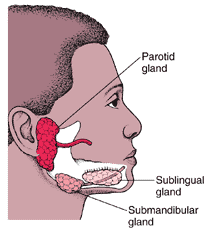Mumps virus scientific name
 Mumps is a viral illness caused by a paramyxovirus, a member of the Rubulavirus family. The average incubation period for mumps is 16 to 18 days, with a range of 12 to 25 days.
Mumps is a viral illness caused by a paramyxovirus, a member of the Rubulavirus family. The average incubation period for mumps is 16 to 18 days, with a range of 12 to 25 days.
Mumps usually involves pain, tenderness, and swelling in one or both parotid salivary glands (cheek and jaw area). Swelling is first visible in front of the lower part of the ear. It then extends downward and forward as fluid builds up in the skin and soft tissue of the face and neck. Swelling usually peaks in 1 to 3 days and then subsides during the next week. The swollen tissue pushes the angle of the ear up and out. As swelling worsens, the angle of the jawbone below the ear is no longer visible. Often, the jawbone cannot be felt because of swelling of the parotid. One parotid may swell before the other, and in 25% of patients, only one side swells. Other salivary glands (submandibular and sublingual) under the floor of the mouth also may swell but do so less frequently (10%).
Nonspecific prodromal symptoms may precede parotitis by several days, including low-grade fever which may last three to four days, myalgia, anorexia, malaise, and headache. Fever may persist for 3 to 4 days. Parotitis, lasts at least 2 days, but may persist longer than 10 days. However, mumps infection may present only with nonspecific or primarily respiratory symptoms, or may be asymptomatic.
Mumps infection is most often confused with swelling of the lymph nodes of the neck. Lymph node swelling can be differentiated by the well-defined borders of the lymph nodes, their location behind the angle of the jawbone, and lack of the ear protrusion or obscuring of the angle of the jaw, which are characteristics of mumps. People with mumps are usually considered most infectious for several days before and after onset of parotitis.






